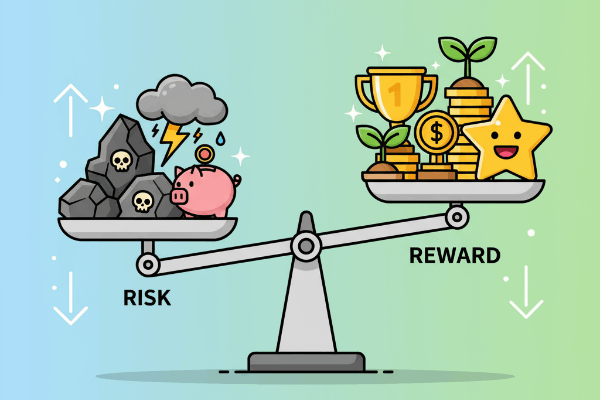New traders often chase the thrill of finding the perfect entry point or a "holy grail" strategy. While a good strategy is important, it is not the key to long-term success. The true secret to staying in the game is something far less glamorous but infinitely more powerful: risk management. Simply put, it's how you protect your money.
Without a solid plan to manage risk, even the most profitable strategy can lead to a blown account. This article will break down why risk management is essential and give you simple, actionable steps to protect your capital.
Why You Can't Ignore Risk
The market is unpredictable. No matter how confident you are in a trade, there is always a chance it will move against you. Risk management is not about avoiding losses altogether—that's impossible. Instead, it is about ensuring that your losses are small and manageable, while your winning trades have room to grow.
Think of it this way: a trader who makes many small wins but suffers one huge loss will ultimately fail. In contrast, a trader who takes small, controlled losses but secures a few large wins will be profitable over time. The difference is discipline and a clear set of rules for managing risk.
Core Principles of Smart Risk Management
Effective risk management isn't complicated. It comes down to a few core principles that every trader, new or experienced, should follow.
1. The 1% Rule: Your First Line of Defense
This is one of the most famous rules in trading for a reason. The 1% rule means you should never risk more than 1% of your total trading capital on a single trade. For example, if you have a $1,000 account, the most you should be willing to lose on any one position is $10.
This rule does two critical things: it keeps you from emotional decisions and ensures that a string of losses won't wipe out your account. It allows you to survive long enough to learn and improve.
2. Set a Stop-Loss for Every Trade
A stop-loss order is a pre-set instruction to close your trade at a specific price. This is your safety net. Before you even enter a trade, you must know your exit point if the market turns against you. Setting a stop-loss removes emotion from the decision to cut a loss. It’s an automated action based on your plan, not on fear or hope.
Never move your stop-loss further away to "give the trade more room to breathe." That is a classic mistake driven by emotion, not logic.
3. Know Your Risk-to-Reward Ratio
Before placing a trade, ask yourself: "How much am I willing to risk to make a certain profit?" A healthy risk-to-reward ratio is at least 1:2. This means you are aiming to make at least twice as much as you are risking. For instance, you might risk $10 (your stop-loss) to make $20 (your take-profit).
This approach means you don't have to be right all the time. With a 1:2 ratio, you could be wrong on two-thirds of your trades and still break even.
Putting It All Into Practice
Theory is one thing, but execution is what matters. The best way to build good habits is through consistent practice in a safe environment. Before you risk real money, test your strategy and risk management rules on a **Quotex demo account**. This lets you experience real market conditions without any financial pressure.
Final Thoughts: Defense Wins Championships
In trading, your capital is your most important tool. Protecting it should be your number one priority. By implementing strict risk management rules, you shift your focus from chasing profits to preserving your ability to trade another day. This defensive mindset is what separates amateurs from professionals.
If you found this guide helpful, share it with others on their trading journey. And if you're passionate about helping others learn, consider joining our **affiliate program** to grow with us.



